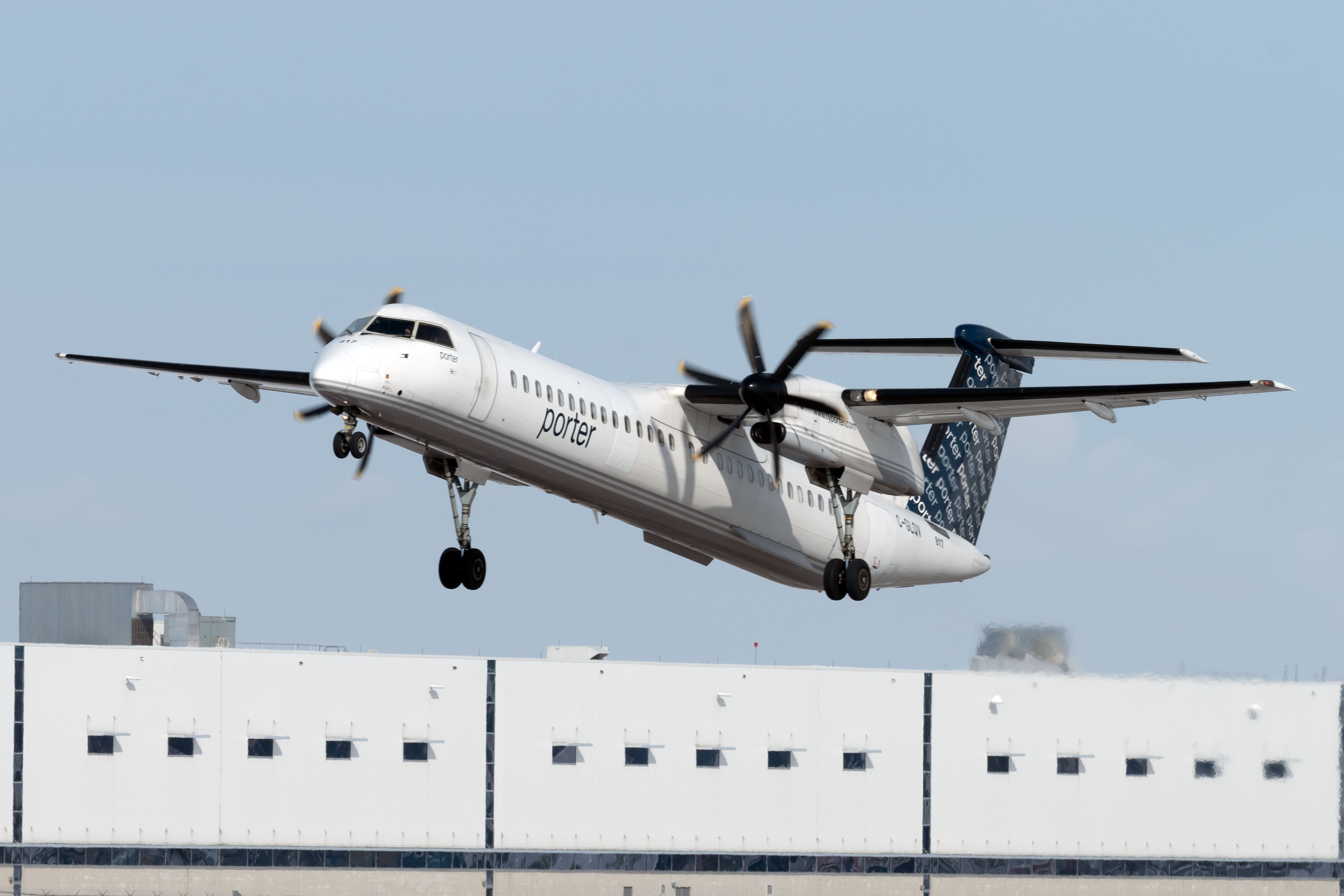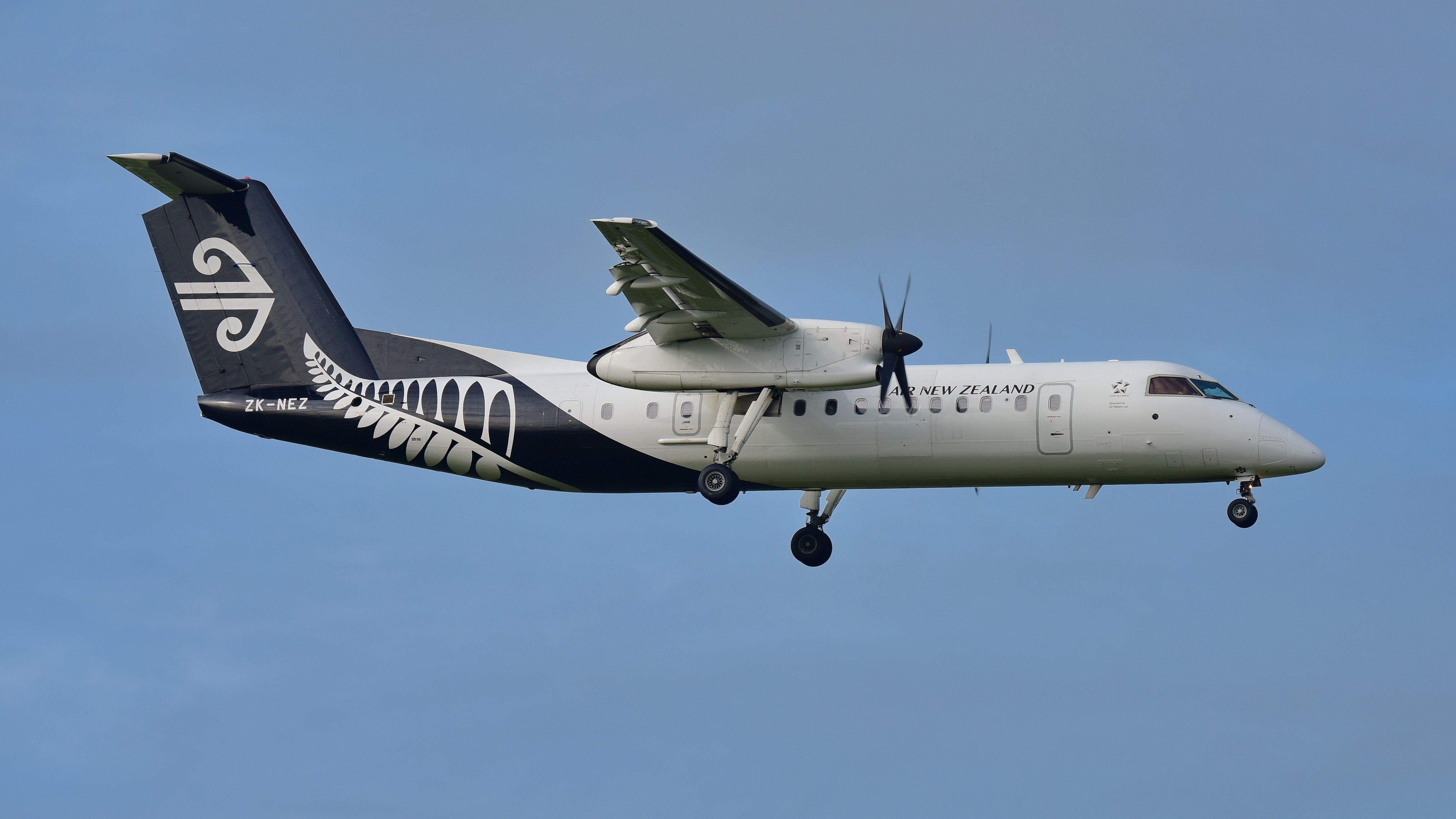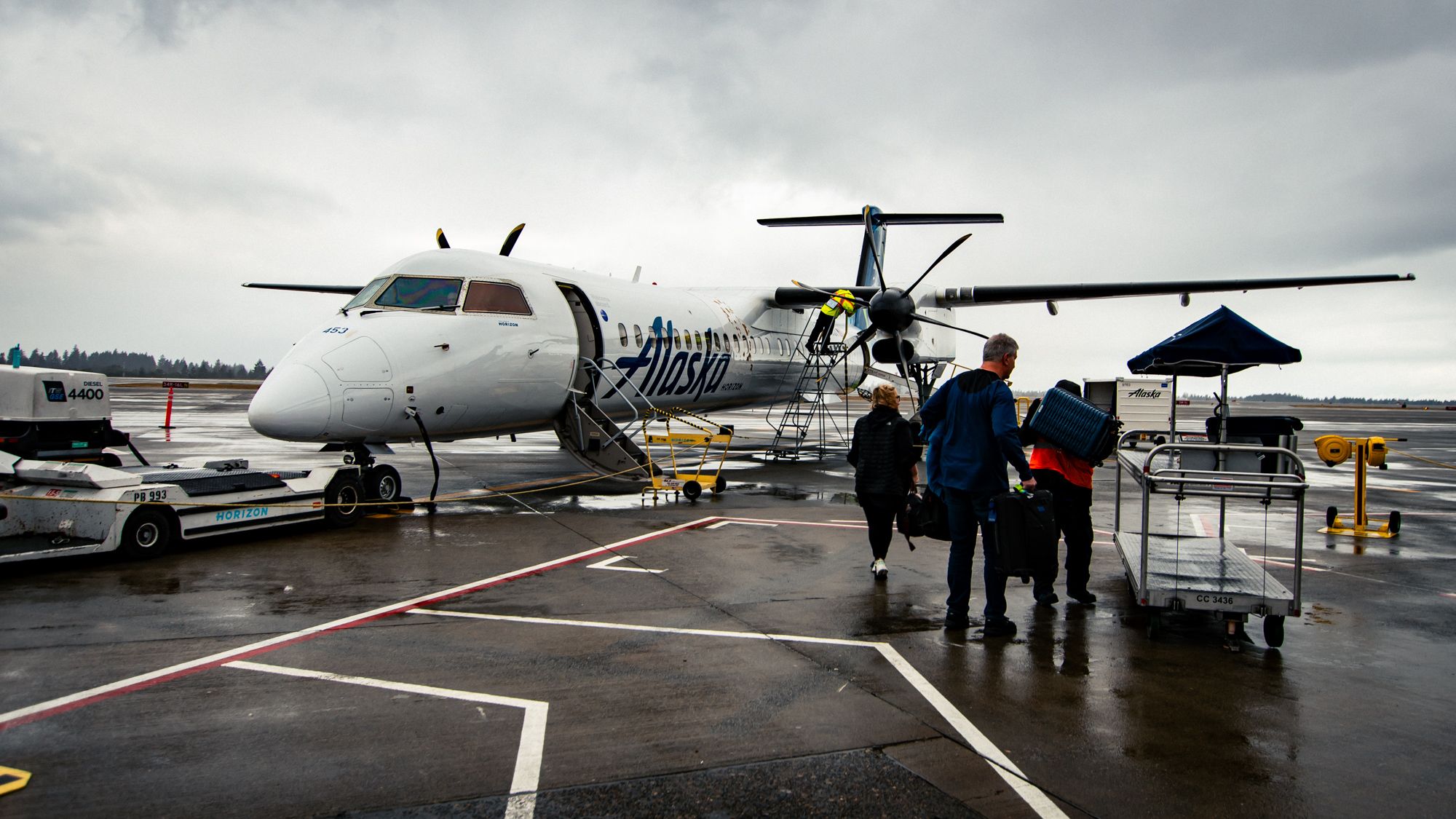One of the most popular families of turboprop airliners still ferrying dozens of passengers to and fro, De Havilland Canada’s (originally de Havilland, but this changed) Dash 8s have been around since 1983. Many people have noticed that some variants include a “Q” while others don’t, for example, the “DHC-8-301” and “Q300”, but why is this so?
A brief overview of the Dash 8
Historically, de Havilland of Canada produced the -8-100, -200, and -300 series of aircraft, each with multiple variants. Notably, the company was sold numerous times, first to Boeing and then to Bombardier, which took over operations in 1992, according to Airways Magazine. With the turboprops being manufactured by Bombardier, the company designed its own version of some of the aforementioned planes, the “Q-Series.”
Removing the “Dash 8” and labeling these regional airliners as the Q100/200/300, these Q-Series turboprops were very similar to the original designs. However, this “Q” stood for “quiet,” and their most notable difference was the inclusion and implementation of a noise suppression system, facilitating a noticeably quieter passenger experience.
Want answers to more key questions in aviation? Check out the rest of our guides here!
As explained in Simple Flying’s article covering the history of the Dash 8 family, Bombardier sought to “provide operators further refinements which included the Active Noise and Vibration Suppression (ANVS) system for jet-like comfort.” Reportedly, the difference between flying on an original DHC-8 and a Q-series version is very obvious in a positive way.
Bombardier also developed the 400 Series of the Dash 8, and examples exist as both DHC-8-400 and Q400, so we assume the same for the -400 and Q400, right? Perhaps not.
How the Q400 is different from the others
It’s complicated, yet it likely boils down to a marketing name difference. As stated, Bombardier took over the DHC in 1992 and controlled the company until 2019, when it sold the Dash 8 program to Longview Aviation Capital Corporation. And according to a paper submitted to Canadian Acoustics (Acoustique Canadienne),
“The first production version of the ANVS system was incorporated on a production Dash-8 in 1996. Since then, the ANVS system is an integral part of the production aircraft built for all models…”
The first Dash 8 “400” was delivered in 1997, a year after the ANVS noise suppression system became a staple of the Dash 8 program. With all of this in mind, examples of the Dash 8 Q400 preceded the turboprops produced as DHC-8-400s without the “Q.”
However, according to various sources, this is primarily due to De Havilland of Canada taking back its naming scheme from decades past, even though they should still feature the noise reduction system. A conversation on Airliners.net also seems to confirm this, suggesting that, regardless of when the aircraft was produced or if it features a “Q” in the name, they are essentially the same plane, and both feature the ANVS.
Have you ever flown on both a De(de) Havilland Canada-manufactured Dash 8 and its Bombardier Q-series counterpart? Tell us your experiences in the comments below!
Sources: Canadian Acoustics, BAE Systems, De Havilland Canada, Airliners.net, Airways Magazine


_de_Havilland_Canada_DHC-8-202_taxiing_at_Wagga_Wagga_Airport.jpg)

